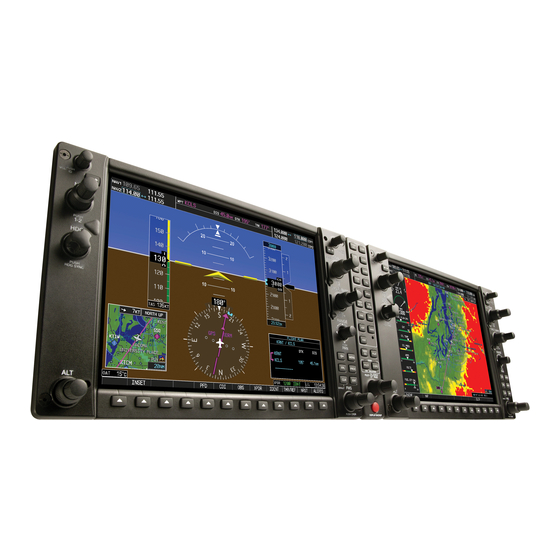RADIO STATUS
When a COM radio is keyed, a white TX indication
appears to the right of the active COM frequency to indi-
cate that a transmission is in progress. The TX indication
disappears once COM transmission is completed.
When a COM signal is received, a white RX indication
appears to the right of the active COM frequency to indi-
cate that a COM signal reception is in progress. The RX
indication disappears once COM signal reception is over.
Figure 4.2.6 Radio Status Indications
NOTE: If a signal is transmitted or received on
a COM radio for which frequency toggling is
enabled (i.e., on which the tuning box is located),
the Frequency Toggle Arrow disappears and
is replaced by a TX or an RX indication, respec-
tively.
EMERGENCY FREQUENCY (121.500 MHZ)
When a COM tuning failure is detected by the system,
the emergency frequency (121.500 MHz) is automatically
loaded in the active frequency field of the COM radio for
which the tuning failure was detected.
Figure 4.2.7 COM Tuning Failure
NOTE: In the event of a dual display failure,
the emergency frequency (121.500 MHz)
automatically becomes available to the pilot
through the pilot headset.
190-00445-00 Rev. A
Garmin G1000 VHF NAV/COM Pilot's Guide for Mooney M20M & M20R
Quickly Tuning and Activating 121.500 MHz
Pressing and holding the COM Frequency Toggle key
for approximately two (2) seconds automatically loads the
emergency COM frequency (121.500 MHz) in the active
frequency field of the COM radio for which frequency
toggling is enabled.
Figure 4.2.8 Quickly Tuning 121.500 MHz
STUCK MICROPHONE
If the COM1 (or COM2) push-to-talk (PTT) switch be-
comes stuck, or is accidentally left in the keyed position,
or if a signal continues to be transmitted after the switch
is released, the COM transmitter automatically times out
(i.e., ceases to transmit) after 35 seconds of continuous
transmitting and an alert appears on the PFD to advise the
crew of a stuck COM microphone (see figure below).
Figure 4.2.9 Stuck COM Microphone Alert
OPERATION – COM
4-7

